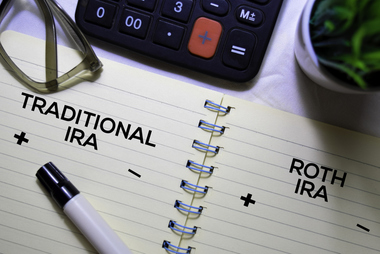The Timing
Most suggestions to save on your taxes must be done before year-end to be effective for that year. However, certain retirement accounts can be adjusted into the next tax year, and can still help the previous year’s taxes. So, this year, you still have until April 18, 2023 to make a transaction that might save you money on your 2022 taxes.
The Basics
Anyone with earned income can open an IRA. For 2022, the limit on both traditional and Roth IRA’s is $6,000. If you are 50 or older you can contribute an additional $1,000. For 2023 the limit increases to $6,500.
Married couples filing jointly are able to deduct the full amount of an IRA contribution if neither spouse has a workplace plan. If one spouse has a workplace plan, the other spouse can get a full deduction for IRA contributions, as long as their joint income is $204,000 or less.
If you have money sitting in the bank, and have no plans of using that money, it probably makes sense to put something into an IRA and save money on your taxes. If you don’t make the contribution, you are leaving money on the table. According to the Investment Company Institute, in 2021, only 15% of all U.S. households made IRA contributions.
Traditional IRA vs. Roth IRA

Most taxpayers choose to use traditional IRA’s because of the upfront tax savings. However, withdrawals years later, when the taxpayer retires, are taxed at the same rate as ordinary income. By contrast, there is no upfront deduction for contributions made to a Roth IRA. However, the withdrawals upon retirement are tax-free, which can be a phenomenal tax benefit. Eligibility to contribute to a Roth IRA is based on income. For 2022, the income limit for most single taxpayers begins at $129,000 and $204,000 for most married filers. Taxpayers who earn too much to make contributions directly to a Roth IRA can still contribute via a two-step process known as a “Backdoor Roth”. The taxpayer first contributes to a traditional nondeductible IRA. Then, the money is moved into a Roth IRA, and the taxpayer pays any income tax on the earnings. Although taxes are paid up front, the money can now grow tax free until retirement and no tax will be due upon distribution.
Self-Employed Options
Taxpayers with self-employed income can contribute to a SEP-IRA. For 2022, SEP-IRA’s have a contribution limit of $61,000. Those aged 50 and above can contribute an extra $6,500. In addition, if the taxpayer has requested an extension to file their return, they can make the 2022 SEP-IRA contribution as late as October 16, 2023.
Nondeductible IRA’s
As with most retirement plan contributions, the taxpayer has the added benefit of saving on this year’s taxes, while also boosting their future retirement savings. However, even if you will not benefit from a savings in taxes, contributions to retirement plans can still help your retirement savings. With after tax, nondeductible, contributions to a traditional IRA, the money grows tax free, and only the earnings are taxable when withdrawals are taken upon retirement. However, it should be noted that taxpayers who make these contributions, need to keep track of how much they have contributed over time.
To further discuss retirement accounts and IRA’s, please feel free to reach out to your LMC tax professional.
Subscribe to LMC’s the Bottom Line monthly e-newsletter:



